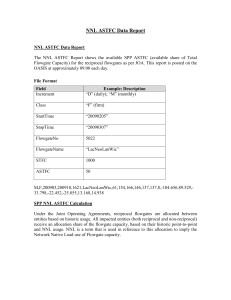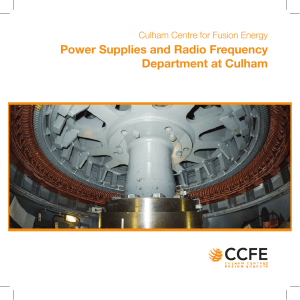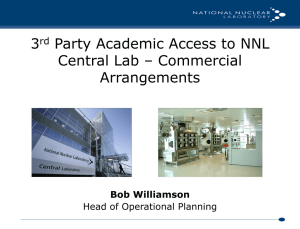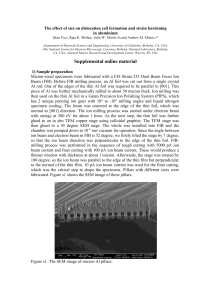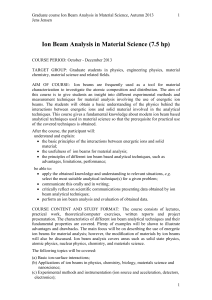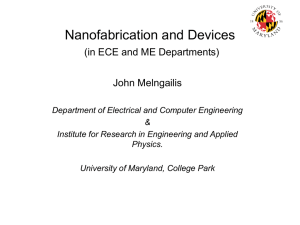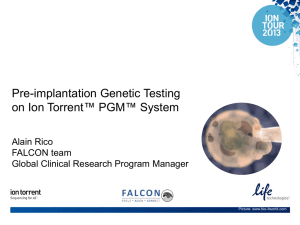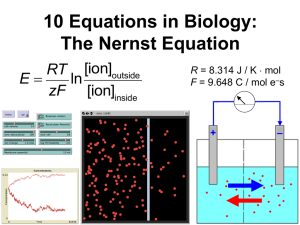A Materials Research Facility at Culham
advertisement
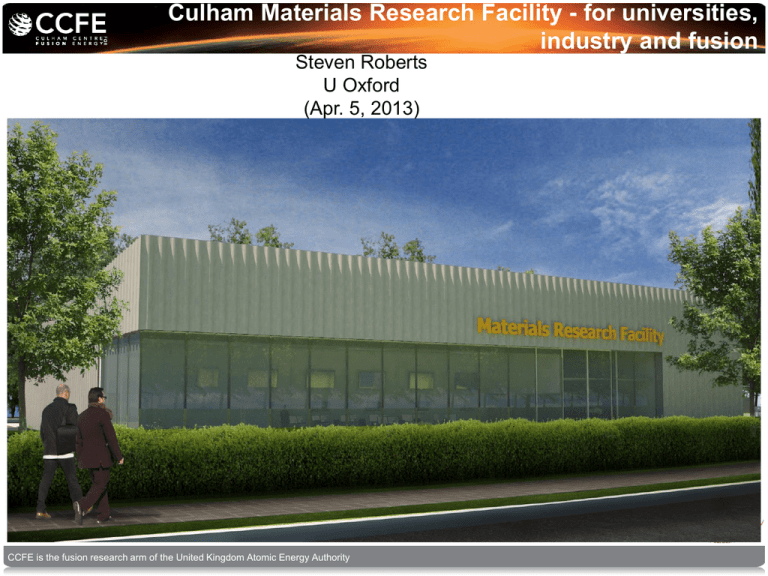
Culham Materials Research Facility - for universities, industry and fusion Steven Roberts U Oxford (Apr. 5, 2013) CCFE is the fusion research arm of the United Kingdom Atomic Energy Authority History • 2011 - Oxford & Bristol approach CCFE re facility to make microsamples from material too active for university labs. • Jan 2012 – bid for RC capital combined with bids from NNL (higher activity) and Dalton (beam damage & analysis) to form £15M “NNUF” proposal (National Nuclear Users Facility – CCFE, NNL, Dalton, Imperial, Oxford, Manchester) 2 • Ongoing “Beddington Review” meant funding was sufficiently likely for CCFE to start a Concept Design (completed Dec. 2012) • Many labs and potential customers consulted to refine facility specification – Oxford, NNL, DCF, Idaho NL, CEA, NPL, AWE, Rolls Royce ..... • Nov 2012 – First tranche of funding (£5M for whole NNUF) - to be spent by March • March 2013 - Beddington review published. NNUF confirmed to be total of £15M. National Nuclear User Facility • NNL (Sellafield): Highly active materials • Sectioning, metallography • Focussed ion beam system: TEM specimens • Dalton Cumbria Facility: Ion beam systems • New ion source to upgrade existing accelerator to dual-beam sytem • CCFE: Low activity materials • Sectioning, metallography • Focussed ion beam system: specimens for TEM*, APT*, m-mechanics • Nanoindenter • SEM • Gas desorption spectrometer Partners will also contribute existing equipment & expertise to form the whole NNUF. (*off-site) 3 Why at Culham? • Experience of hosting and working with visiting scientists • Nuclear expertise • Culham is not a “licensed site” Guiding principle – Culham will not change from its category 2 status. This limits activity of the incoming samples and the resulting waste streams but there is still a clear role to fill between universities’ and NNL’s capabilities. Universities CCFE 37MBq (e.g. Oxford) 4 Medium activity, structural NNL 35TBq (Co60) Most active, fuel cycle (Initial) Function of MRF + 10 µm Focused Ion Beam cuts micro-cantilevers Nanoindenter for micromechanical tests. Plus microscopy Universities will now be able to analyse material damaged by neutrons (not proxy damage by ion beams). Much of the research will be on steels for both fission and fusion Plus analysis of JET tiles for erosion and tritium contamination, adding to analysis already done in Finland, Portugal, etc. All in controlled conditions in a new building to handle radioactive and toxic (Be) samples. 5 5 Status and near term MRF programme 6 6 • Concept Design completed in December. • FIB, nanoindenter and a scanning electron microscope plus smaller items all ordered, and delivered or “factory accepted” by March 31st. • Will use new equipment a.s.a.p. – for practice, research and trials of cutting techniques (to minimise radioactive dust) • Detailed design of facility and building is underway. • Operational with active materials early 2015. FAFNIR 14MeV Neutron Source • Prioritized list of functional requirements: (i) identify new damage phenomena associated with 14MeV neutrons (ii) calibration and validation of data from fission and ion irradiations (iii) validation of materials towards lifetime damage levels • FAcility for Fusion Neutron Irradiation Research. – 40MeV, 5-30mA cw D+ beam incident on a rotating multi-layered carbon target. – irradiation volume 25cm3 at 4-20dpa and 150cm3 at 1-5dpa, – miniature sample analysis is exploited to maximize the population of the volume. – accelerator is less challenging than IFMIF • Paper with detailed aims and design submitted to EFDA Materials Advisory Group in September 2012 – Is now in the ongoing EFDA “roadmap”, in their annual report 2013. TRITON Triple Ion-beam Facility • Outline Plan only for UK facility • Target parameters – – – – – Heavy ion and two light ion beamlines Heavy ions to 7-8MeV, 5–10 µA , with up to ~6-8+ Fe, W, etc. (depth ~5mm) H up to 1MeV He up to 3MeV Implantations area ~ 100mm square • 1 dpa per hour from heavy ions – Temperature to ~800C – Beams rastered in synchrony to cover target area. • Estimated cost ~£15M – Build time 30-36 months • Outline Plan submitted September 2012 to Beddington review.

